From Appleton to London to Hong Kong, Lawrence faculty and students used D-Term 2018 to explore ideas, art, research skills and the wider world. D-Term, or December Term, is a two-week mini-term that offers brief, intensive enrichment courses. This year, students had the opportunity to engage with questions of sustainability and historical resilience to disasters, bring a liberal arts perspective to wellness and sharpen practical skills in design and data analysis.
Read more about this year’s D-Term classrooms, whether it’s a room in Main Hall, an urban garden in Hong Kong or the top of St. Paul’s Cathedral in London, through insights from faculty members.
Hong Kong: Sustainability, Livability, and Urban Design
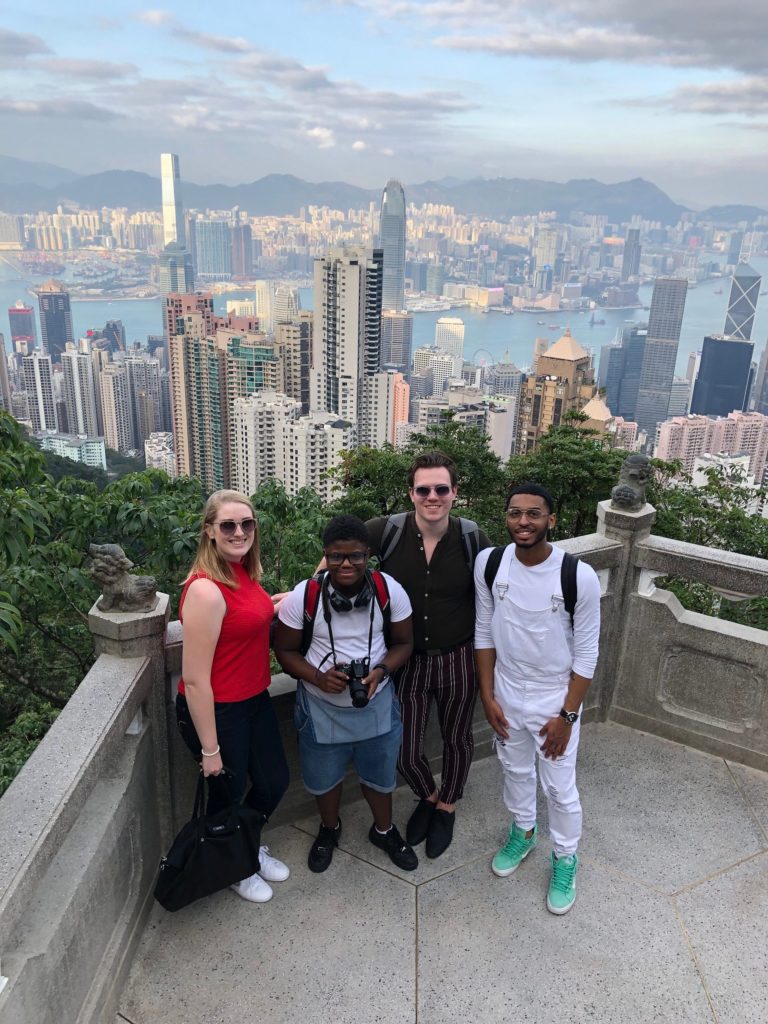
This combined discussion-and-travel course examined sustainable, livable urban design through the lens of contemporary Hong Kong. The class, taught by Stephen Edward Scarff Professor of International Affairs and Associate Professor of Government Jason Brozek and Associate Professor of Government Ameya Balsekar, spent one week on campus reading and preparing, followed by several days in Hong Kong for on-the-ground study, including meetings with local NGOs, government officials and business leaders. Below are excerpts from Jason Brozek’s daily reports on the opportunities for students during the on-the-ground study portion of the class:
Day 1: The first day of the on-the-ground portion of our class on livability, sustainability and urban design in Hong Kong focused on the city’s history, British & Chinese influences and its emergence as a global trading and financial hub. We visited Chunking Mansions to engage with “low-end globalization” (a concept and case study from one of the books we discussed during our week of prep on campus), did a mapping activity with a scan of a vintage 1930 map of Kowloon, visited the Hong Kong Museum of History and hiked at Victoria Peak. We ended the day by having dinner at the Happy Valley Jockey Club with KK Tse (’81) and Wendy Lai.
Day 2: We focused on the preservation of things like urban green space and historic buildings—the kind of things some cities have lost as they tried to build and grow quickly. We did a slow-looking activity in Kowloon Park (inspired by Freshman Studies), then compared it to wilder green space by hiking across the Wan Chai Gap trail to the reservoir on the south side of Hong Kong Island. Connected to a different class discussion, we also visited some preserved historic sites. They included a former army barracks in Kowloon Park, the 1912 Wan Chai Post Office (now the Environmental Resource Centre) and the international award-winning Blue House.
Day 3: We kicked off with Rooftop Republic, a nonprofit that helps corporations and schools build rooftop farms. At this site, they grow on top of a shopping mall and donate the produce to local food banks.
Then we met with Rick Kroos ’66, who was the engineer for the HSBC headquarters in Hong Kong’s financial district (as well as many other projects). Rick connected us with a wide range of other speakers, including Billy Wong, deputy head of research at the HK Trade Development Council; Anneliese Smilie from Redress, a nonprofit dedicated to reducing waste in Hong Kong’s garment industry; and Bernard Chang, an architect with the firm KPF.
Day 4: We spent the morning with the staff of Department of City Planning to learn about the HK2030+ strategic vision. Overall, Hong Kong is focused on livability, sustainability and integration with the broader Pearl River Delta (Shenzhen, Guangzhou, Macau and other nearby cities in China). The students asked terrific (hard!) questions about how this plan intersects with climate change, affordable housing, green space, waste management, historic preservation and land reclamation. In the afternoon, we visited the new Kowloon terminal for the high-speed rail connection with mainland China, which is controversial in Hong Kong. Many people here see it as encroachment on Hong Kong’s autonomy, which is guaranteed under the Basic Law and One Country, Two Systems principle.
You can view the full gallery of photos from Hong Kong here.
Bebop Language and Innovations
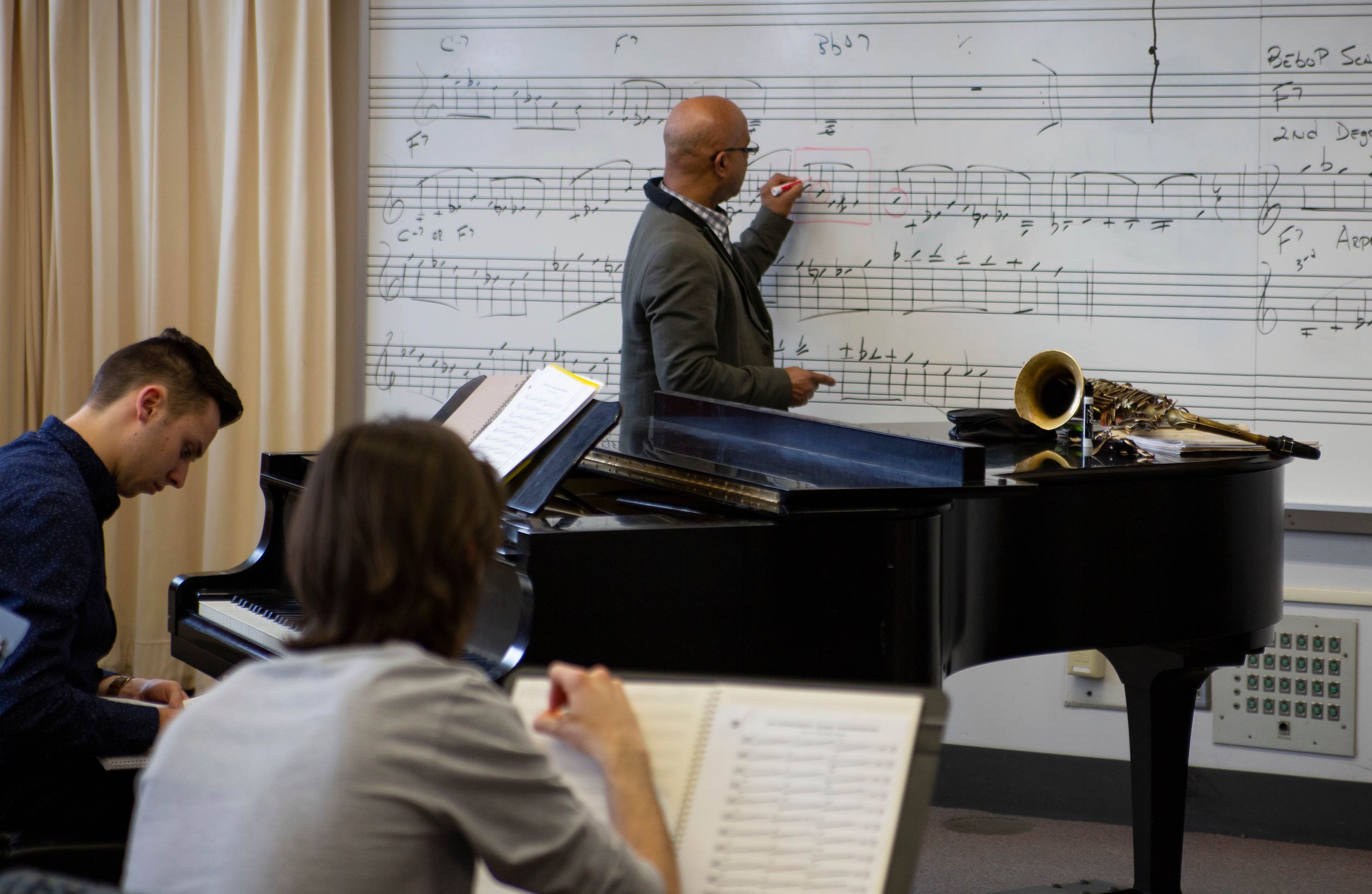
All instruments were welcome in this course exploring how to improvise using bebop language. Among the activities, students studied solo transcriptions of musicians like Charlie Parker, Dizzy Gillespie and Clifford Brown, and applied improvisational concepts.
With an ever and constant changing world, I make my best efforts to keep our students current with contemporary musical forms and genres.
Assistant Professor of Music and Director of Jazz Studies José Encarnación shares that, “the music, it is always about the music and the musicians of that time period. Their wisdom, understanding, imagination, creativity, commitment and contributions to the music inspires me to introduce it to students. With an ever and constant changing world, I make my best efforts to keep our students current with contemporary musical forms and genres,” continues Encarnación. “I like for my students to listen and understand the tradition of this important American art form called ‘jazz’ and the many transformations it took on along its history. In my teachings, I encourage my students to listen, learn and develop respect for the past so they may add their contribution, knowledge and new light embodying the richness of the past and freshness of the new.”
Introduction to R and Excel for Data Analysis
Careful data analysis has become central to decision-making in areas from politics to sports to medicine. This D-Term course introduced students to collecting, cleaning and manipulating messy, real-world data with powerful programs R and Excel.
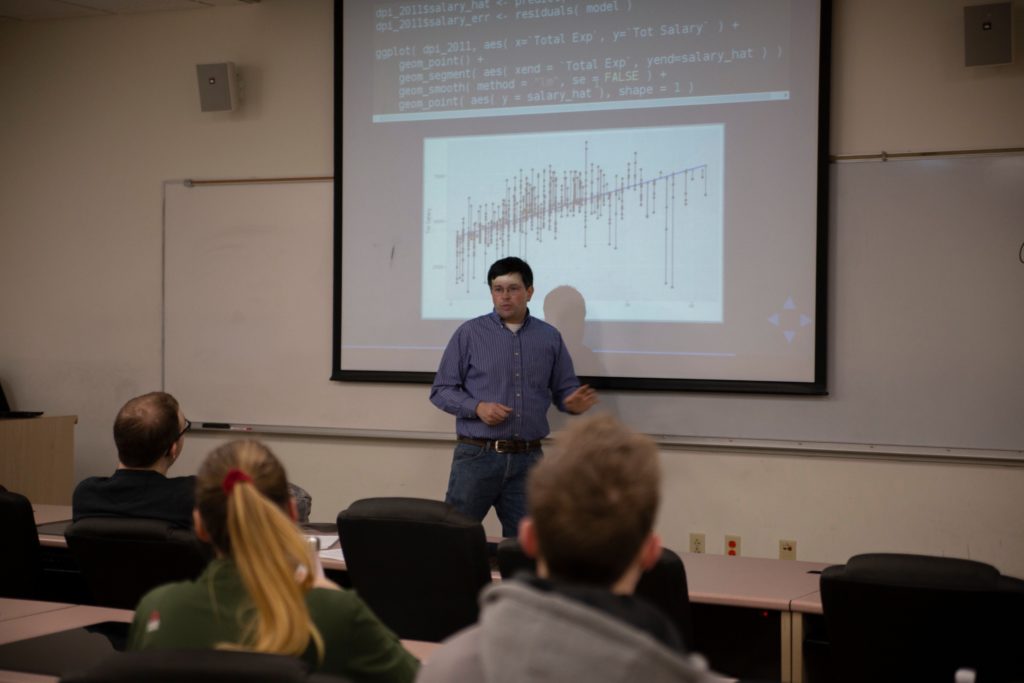
“For any of the natural and social sciences, quantitative data analysis is a core skill,” explains Associate Professor of Government Arnold Shober. “It is like reading a book–but for most of us it is more like reading a book in a language we’re just learning. And just like learning a new language, we make lots of mistakes. The D-Term course lets my students make those mistakes in a low-stakes, focused environment. Then, when it really counts, on their own projects, they can focus on their analyses and not the mechanics. They can write paragraphs–not spell words.”
Happiness: Meditation and Science
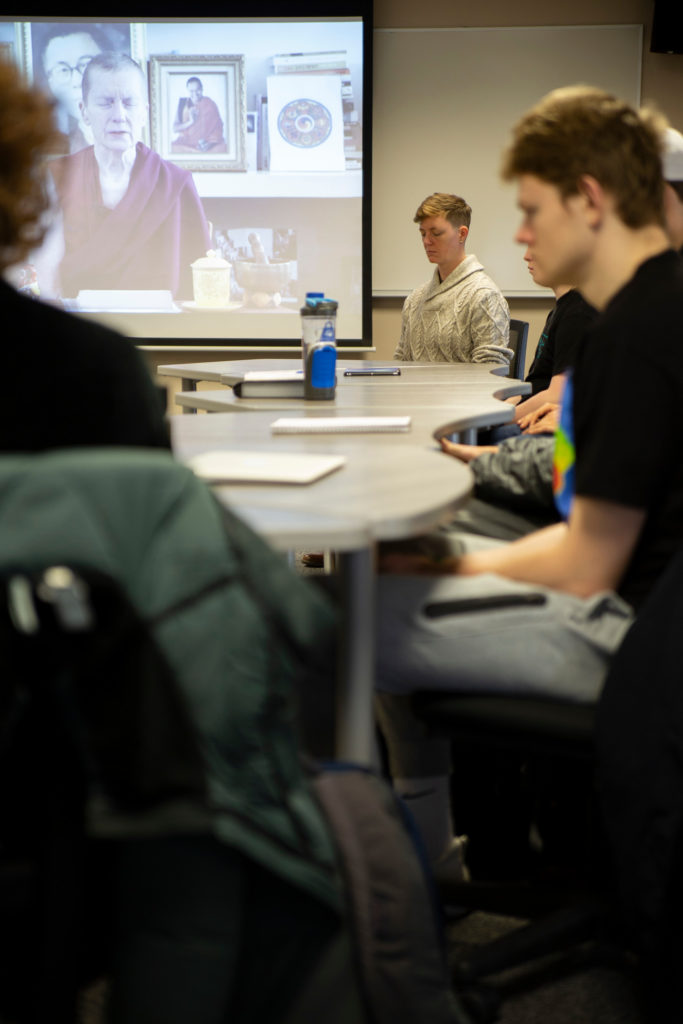
This course took a liberal arts approach to meditation, tackling the question “What is happiness and how is it achieved?” by engaging with ideas of Buddhist philosophy of mind and investigating the ways in which they are being studied and employed by psychologists, neuroscientists and cognitive scientists. This D-Term offering is also an extension of Lawrence’s commitment to student wellness and the whole student.
My hope is that students will come away from this course with tools to help them better deal with stress at Lawrence and beyond.
“This course stemmed from my research and teaching interests in Buddhist thought and meditation,” explains Assistant Professor of Religious Studies Constance Kassor. “Not only did we read about suffering and happiness from both Buddhist and scientific perspectives, but we also spent time engaging in the different meditative practices that we studied. Students were also required to commit to 10-30 minutes of meditation outside of class every day and report on their experiences. My hope is that students will come away from this course with tools to help them better deal with stress at Lawrence and beyond.”
Plague, War, and Fire: Disasters and the Making of London
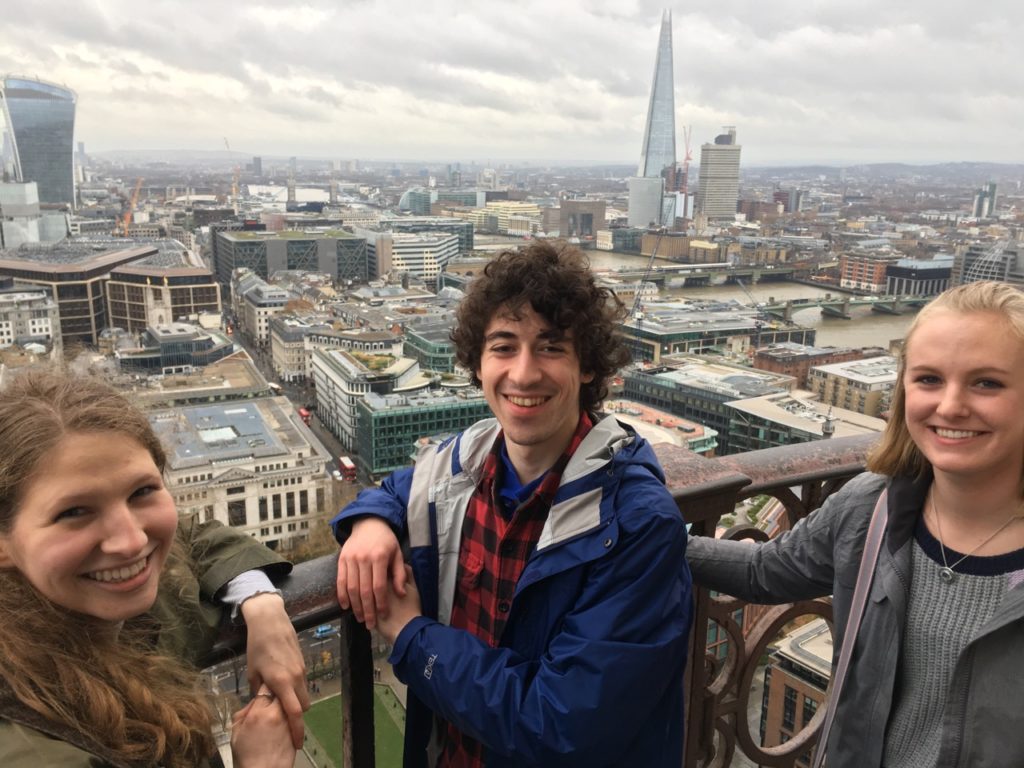
Between 1642 and 1666 London experienced war, plague and fire. This December, Lawrentians traveled to London to examine these catastrophes and explore how the city’s responses shaped the future of not merely London, but other cities across the globe. Students visited museums and historical sites and considered how London responded to crisis, commemorated it and confronted it again when German bombs fell during the twentieth century.
“London is such an incredibly rich landscape on which to study history,” notes Frederick, whose D-Term class grew out of an earlier course he taught at Lawrence’s London Centre in 2016. “During these two weeks we were in constant contact with the deep history of this fascinating city, from walking past walls erected by the Romans, to having a lecture from an archeologist about the 14th-century plague skeleton he had laid before us, to exploring the rooms from which Churchill defended the defense of England during the Blitz. I can teach students a great deal about history in the classroom, but there is something to being in the place where it happened that just can’t be replaced.”
(Frederick also adds a dispatch about the updated London Centre: “We got a tour of the new London Center. It’s awesome!”)
Adobe Creative Suite
Associate Professor of Art Benjamin Rinehart developed a workshop setting to introduce students to the Adobe Creative Suite programs, which include Photoshop, InDesign, and Illustrator. “Students, staff and faculty are eager to become proficient in the Adobe Creative Suite programs,” observes Rinehart. “This course is valuable for any field of study and has many applications beyond being an artist or designer.”
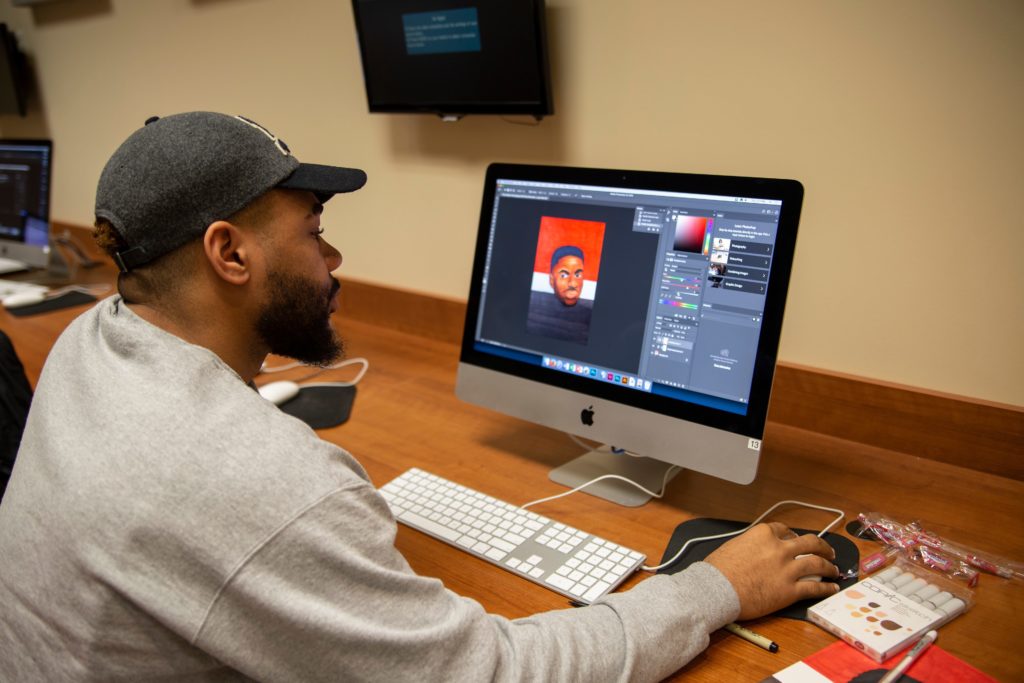
From creating art to presenting data, knowledge of design principles and programs gives Lawrentians another tool to enhance their own work and offer a broad array of talents to prospective employers. The class is project-centered, allowing each student to explore the multifaceted and contemporary nature of each program. In just a couple of short weeks, students are exposed to methods in image construction, graphic design, typography and more. Students also visited the Lawrence University Office of Communications to speak with designers and see how these programs are used to advance an organization’s materials and mission.